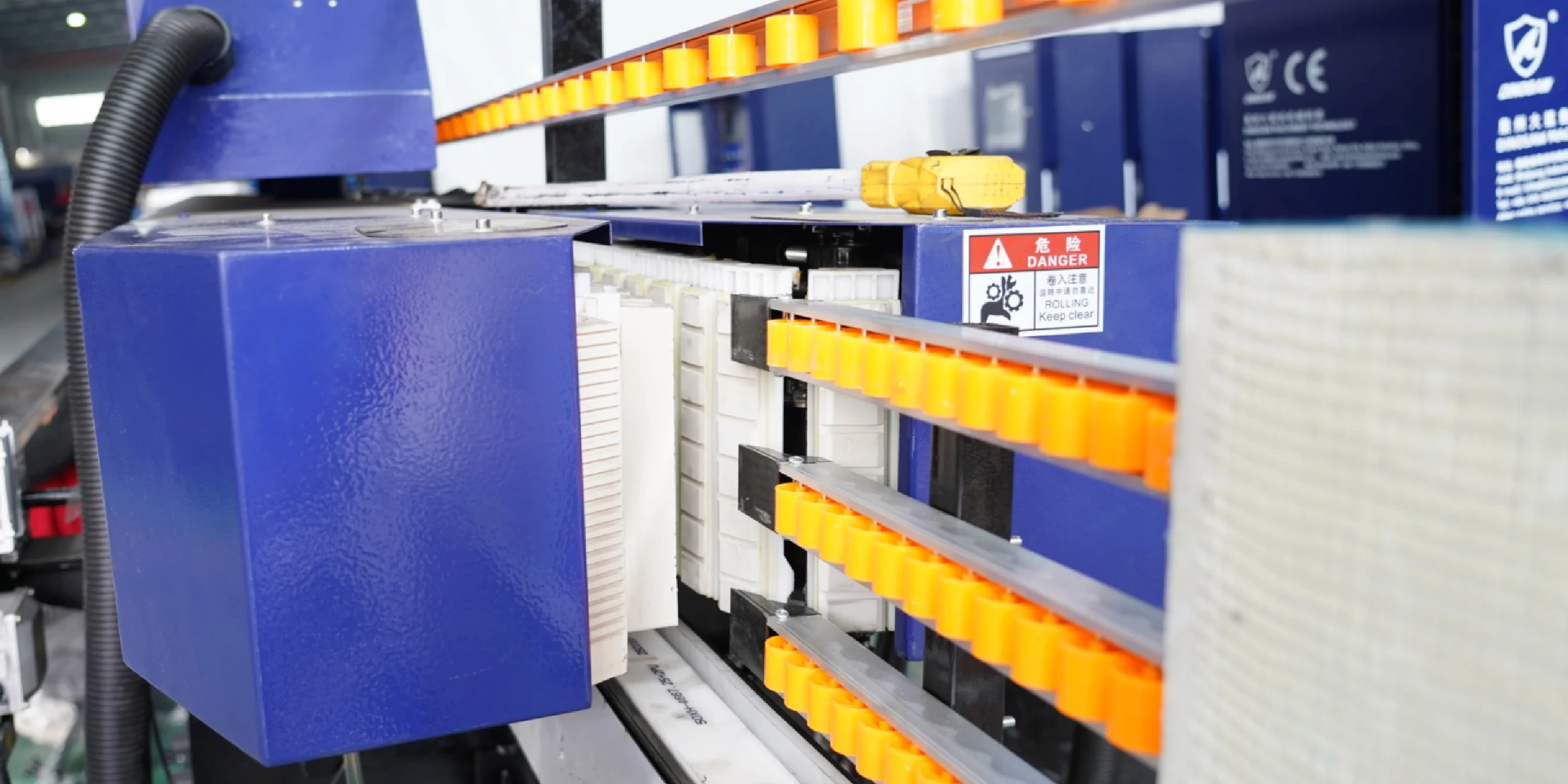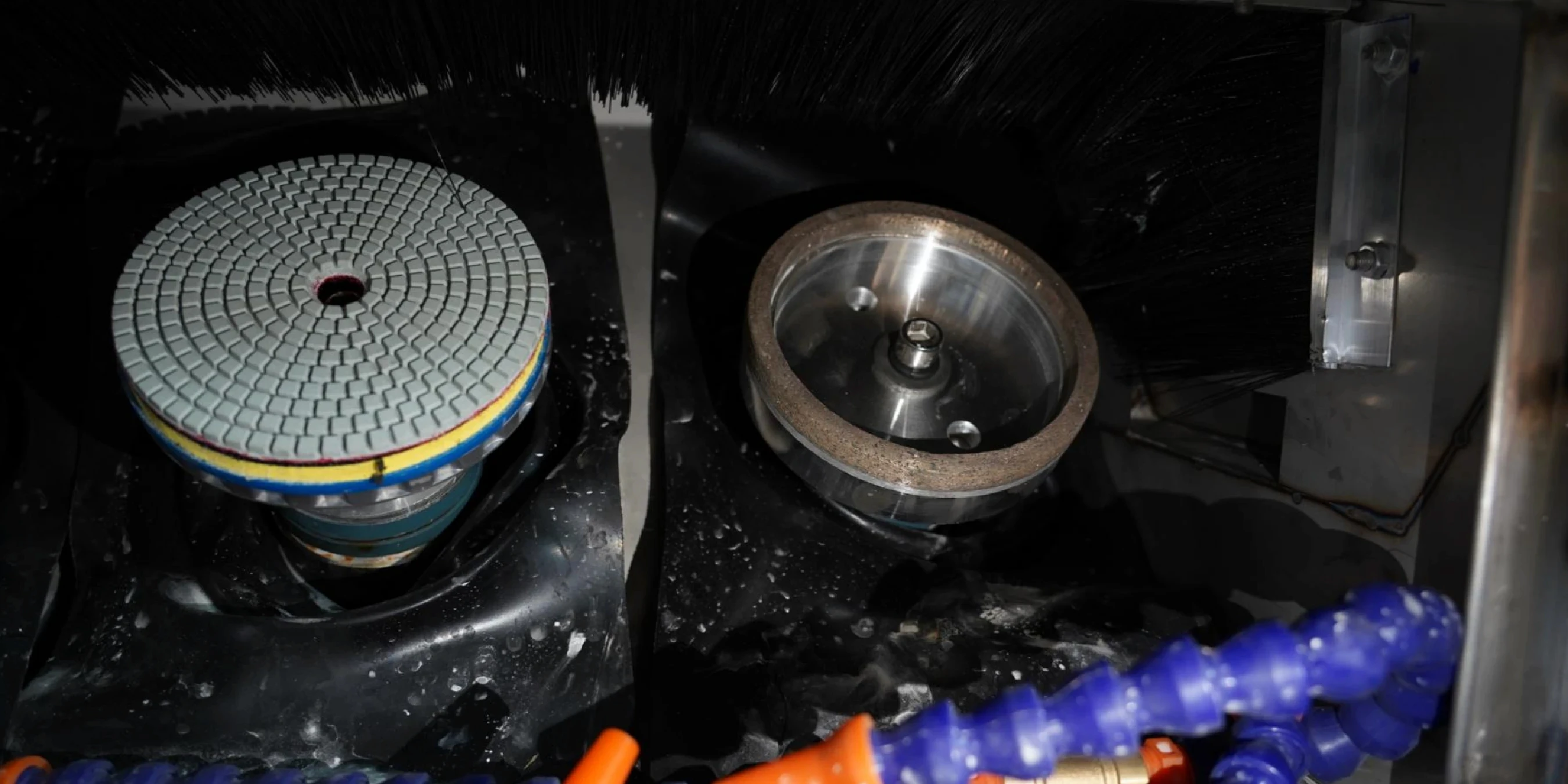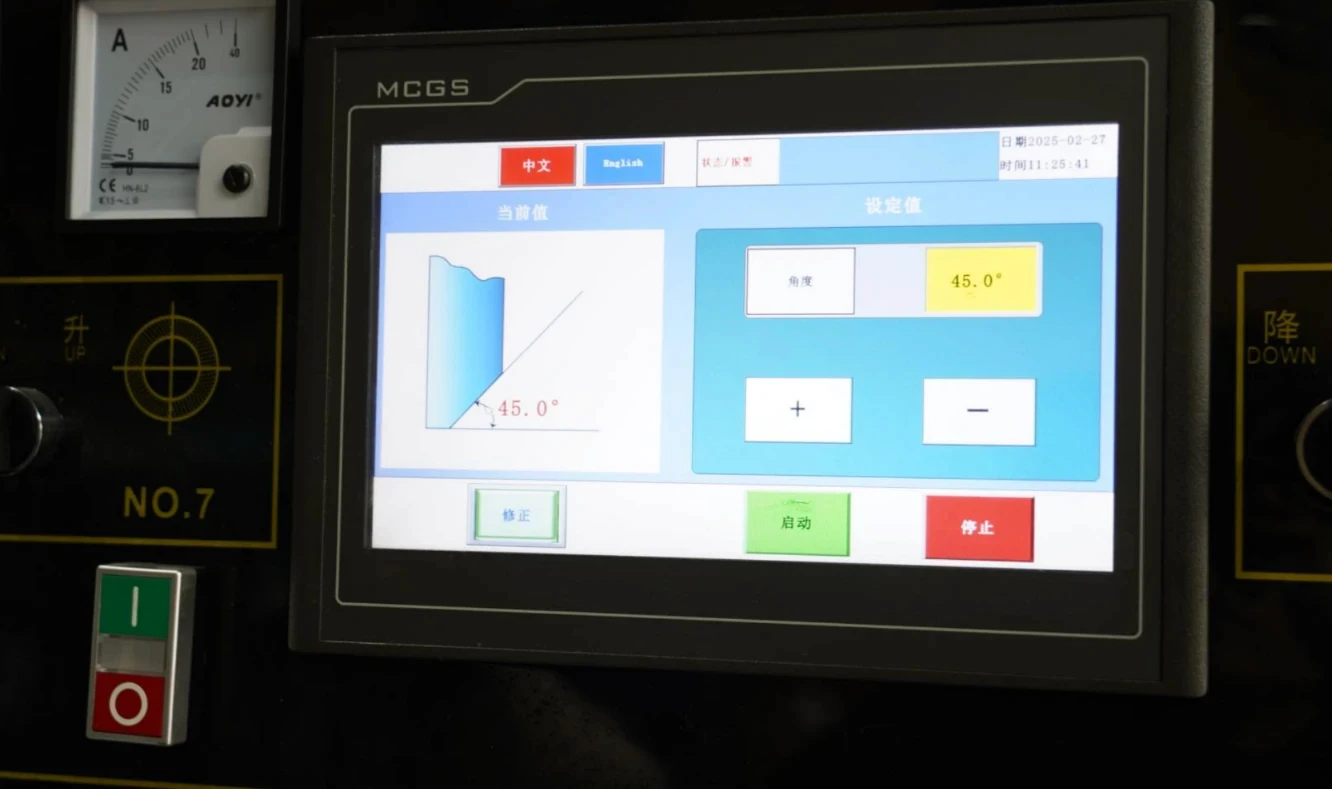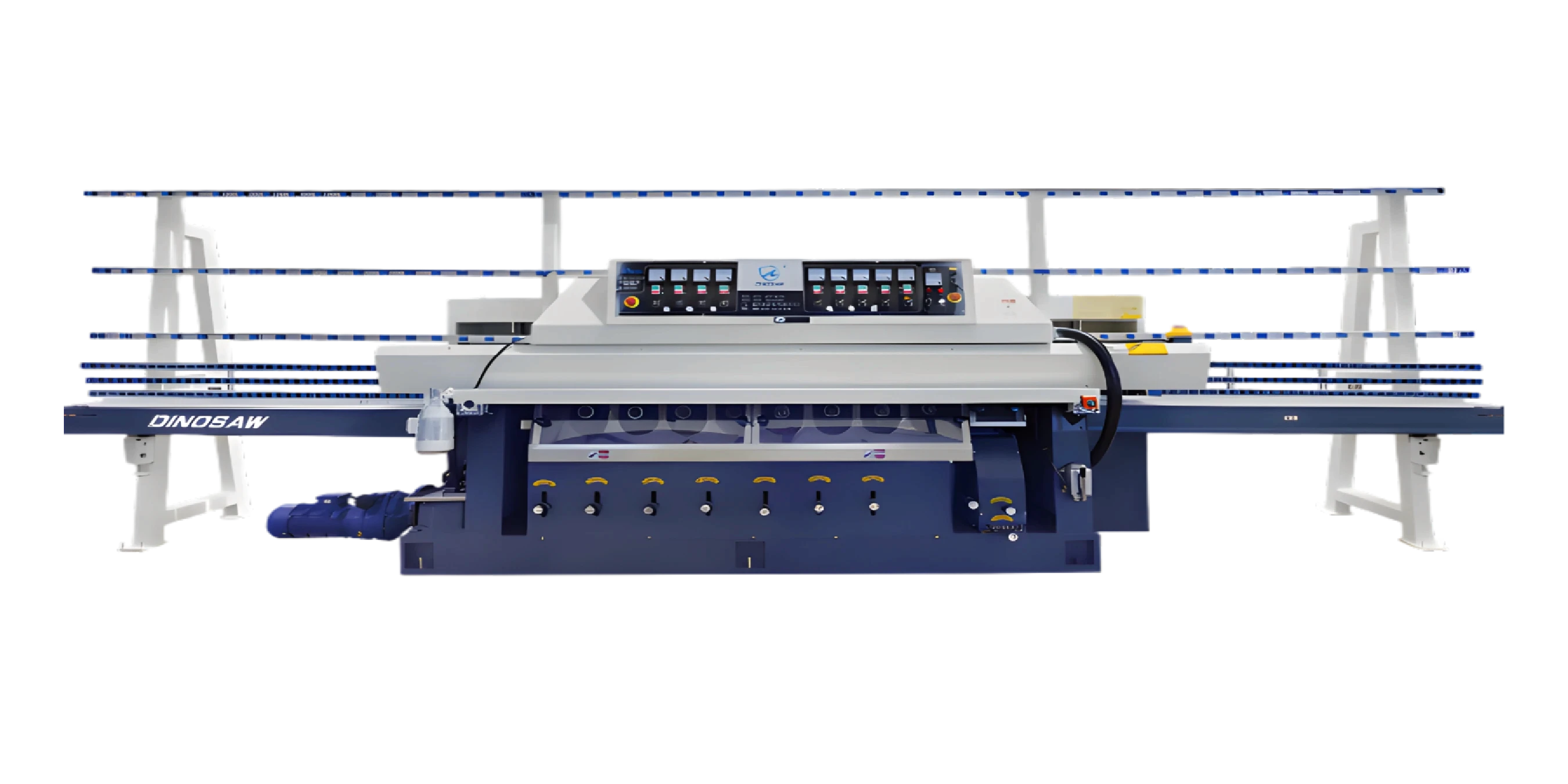Hi, this is Lizzy from Dinosaw ( Not a Robot ). Which Machine ( model ) do you want? Please WhatsApp us now
A complete guide to operating and maintaining your glass edging machine. Includes SOPs, a troubleshooting guide for common issues, a preventive maintenance schedule, and an FAQ section.
Proactive maintenance is the most effective strategy to prevent costly downtime and ensure your glass edging machine consistently produces high-quality results. A well-maintained machine runs safer, consumes less energy, and extends the life of critical components like grinding wheels and spindles.
This guide provides actionable checklists and procedures for operators and maintenance technicians to keep your equipment in peak condition.
Standard Operating Procedures
Follow these procedures for consistent and safe daily operation.
1. Daily Startup Checklist
- Check coolant levels and clarity. Top up if necessary.
- Inspect conveyor belts for debris or damage.
- Verify that all safety guards and emergency stops are functional.
- Power on the machine and allow the control system to initialize completely.
2. Wheel Change Procedure
Our machines are equipped with a one-button tool change feature to simplify this process.
- Ensure the machine is in maintenance mode and the main power is locked out.
- Press the "Tool Change" button on the control panel to release the pneumatic wheel fixation.
- Remove the old wheel and install the new one, ensuring it is correctly seated.
- Disengage the tool change mode to re-engage the pneumatic lock.
3. Pressure-Wheel Adjustment for Thickness Changeover
- Measure the thickness of the new glass stock.
- Use the manual handwheel to adjust the height of the upper conveyor pressure-wheels to match the glass thickness plus a small tolerance (manufacturer-reported).
- Run a test piece to confirm that the glass is held securely without excessive pressure.

Top 7 Troubleshooting Issues
Edge Chipping
Cause: Worn diamond wheels or incorrect pressure.
Fix: Inspect and replace worn wheels; reduce grinding pressure.
Prevention: Adhere to the wheel replacement schedule.
Hazy or Poor Polish
Cause: Contaminated coolant or worn polishing wheels.
Fix: Drain and replace coolant; inspect and dress polishing wheels.
Prevention: Follow the weekly coolant system check.
Inconsistent Edge Profile
Cause: Loose conveyor belt or incorrect spindle alignment.
Fix: Check and adjust belt tension; perform a spindle calibration.
Prevention: Monthly check of belt tension and alignment.
Machine Vibrates Excessively
Cause: Unbalanced wheels or worn spindle bearings
Fix: Replace unbalanced wheels; inspect bearings for noise or play.
Prevention: Use only high-quality, balanced wheels.
Control Panel Error Codes
Cause: Sensor fault or electrical issue
Fix: Consult the manual for the specific error code; check sensor connections.
Prevention: Keep electrical cabinets clean and dry.
Edge size inconsistency or uneven polish
Cause: Machine base is not level due to foundation settling, or conveyor chain components have drifted out of alignment.
Fix: Re-level the machine base on a solid foundation. Check and adjust conveyor chain guide rails for levelness.
Prevention: Replace aged conveyor chain rubber blocks to ensure uniform height and grip.
Polishing fails at the head, tail, or middle of the panel.
Cause: Misalignment of sprockets after material entry, or loose front/rear clamp plates causing the glass to sink during grinding.
Fix: Re-align sprockets to ensure height and angle are consistent. Tighten all clamp plate fixtures to prevent movement.
Prevention: Regularly check the tightness of all clamping and alignment fixtures as part of monthly maintenance.

Preventive Maintenance Schedule
- Daily: Clean machine, check coolant levels, inspect safety guards.
- Weekly: Clean coolant filter, check conveyor belt tension, inspect grinding wheels for wear.
- Monthly: Lubricate all designated points, check spindle motor condition, calibrate wheel positions.
- Quarterly: Full inspection of electrical systems, check spindle bearings for wear, verify machine leveling.
Field Tips from Operators
Experienced operators often share valuable tips. One common tip found on forums is to use a slightly slower conveyor speed for thicker glass to achieve a better finish. Video tutorials often demonstrate how to dress a polishing wheel to extend its life. Always cross-reference such tips with the official manual for your Glass Edging Machine.
Safety & Compliance
Safety is paramount. Always use appropriate Personal Protective Equipment (PPE), including safety glasses, cut-resistant gloves, and hearing protection. Ensure the machine's electrical system is properly grounded and that all emergency stop buttons are accessible and functional. Adhere to all local regulations regarding water disposal and dust management.
Safety Warnings
- Always verify that the main electrical power supply is stable and normal before starting the machine.
- Always verify that the water or coolant supply is active and flowing correctly before processing.
- Always verify that the measured thickness of the glass matches the machine's current setting or gauge before starting a job to prevent crashes.
FAQs - Operation and Maintenance
What is the best coolant for a glass edging machine?
A synthetic, water-soluble coolant is recommended for most applications. It provides excellent cooling and lubrication while preventing bacterial growth. Avoid using hard water, as mineral deposits can clog lines and nozzles. Always refer to the manufacturer's specifications.
When should I dress a wheel versus replacing it?
Dressing is done to remove embedded glass particles and restore the wheel's cutting surface. You should dress a wheel when you notice a decline in finish quality but the wheel still has sufficient abrasive material. Replace the wheel entirely when it has worn down to its minimum specified diameter.
How do I check conveyor belt tension?
A properly tensioned belt should have minimal sag but should not be overly tight, which can strain motor bearings. As a general rule, you should be able to deflect the belt about 1/2 inch (12mm) at its midpoint with moderate finger pressure. For precise settings, consult the glass edging machine technical guide.
What is the most effective way to capture glass dust?
The most effective method is a combination of the wet-cutting process and a well-maintained coolant filtration system. The coolant traps the vast majority of fine glass particles. A central filtration system that automatically removes sludge is the best long-term solution for high-volume shops.
How often should a glass edging machine be calibrated?
A full calibration should be performed monthly as part of your preventive maintenance schedule. However, you should perform a quick calibration check whenever you change a grinding wheel or if you notice any deviation in edge quality or dimensions.
How long does a thickness changeover take?
With the manual pressure-wheel adjustment system on our machines, a thickness changeover can be completed in under 5 minutes. The process involves adjusting the wheel height and running a test piece to confirm the pressure setting.
What should be in a basic spare parts kit?
A basic kit should include common consumables such as a set of conveyor belts, critical sensors, fuses, and at least one replacement polishing wheel. Having these on hand can prevent extended downtime. A more comprehensive list is available in our selection guide.
What is the correct safe shutdown procedure?
First, complete any active job and clear all glass from the conveyor. Second, press the main stop button on the control panel. Finally, for extended shutdown or maintenance, use the main electrical disconnect switch and follow lock-out/tag-out procedures.
Why does polishing fail at the head, tail, or in the middle?
This issue is typically caused by mechanical misalignment under load. The primary causes are either loose clamp plates allowing the glass to sink slightly during processing, or sprocket misalignment that occurs as the glass enters the machine. The solution is to tighten all clamp fixtures and perform a sprocket re-alignment to ensure their height and angle are perfectly consistent.
How can I prevent size varianceon edges?
Size variance, where the two ends of the glass have different dimensions, is almost always a leveling issue. Preventive steps include ensuring the machine is installed on a solid, stable foundation, regularly checking that the machine frame is level, and inspecting the conveyor chain's rubber blocks for wear. Replacing worn blocks ensures a uniform transport height, preventing tilt and subsequent size inconsistency.
























 English
English 中文
中文 Italian
Italian Türkçe
Türkçe Português
Português

